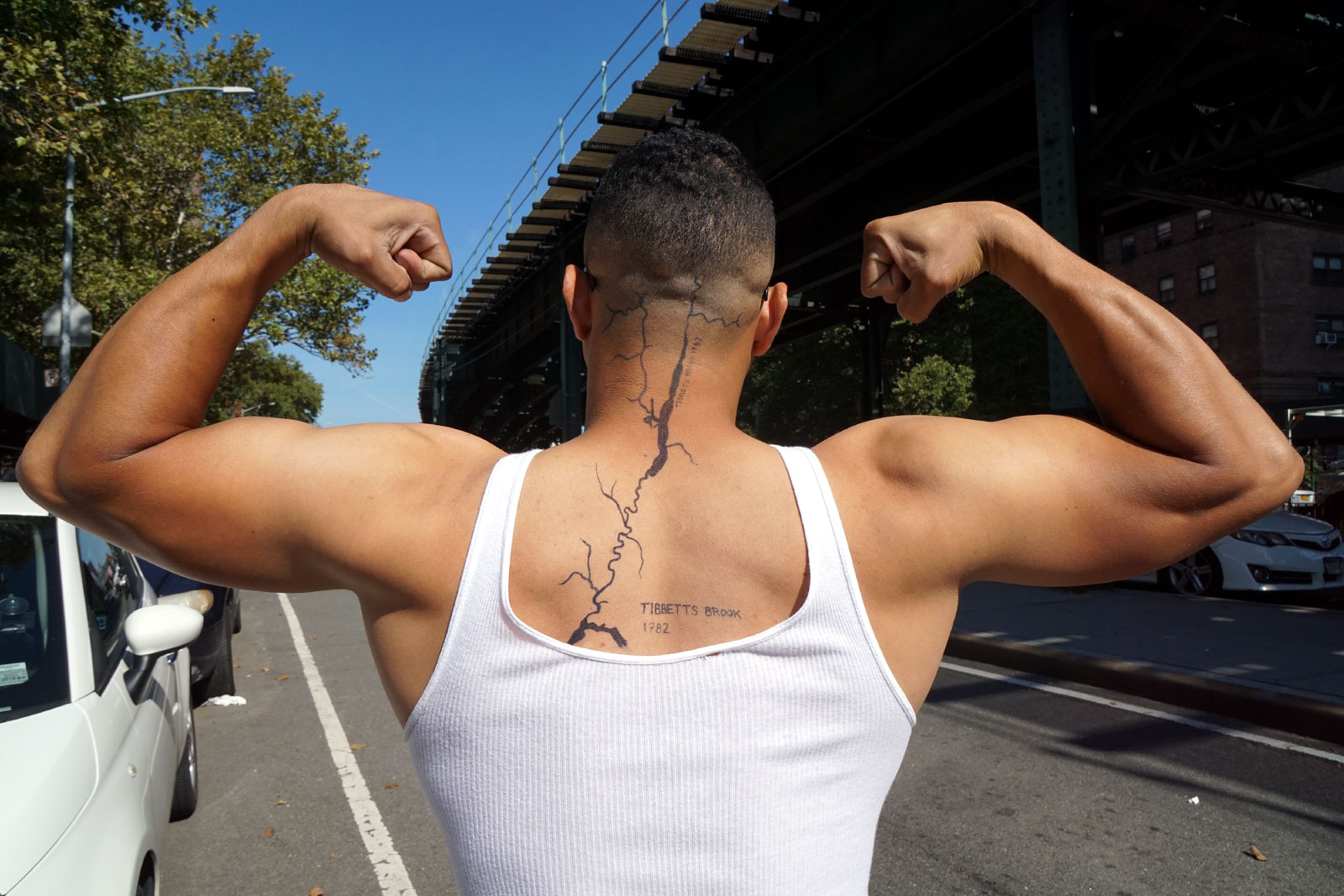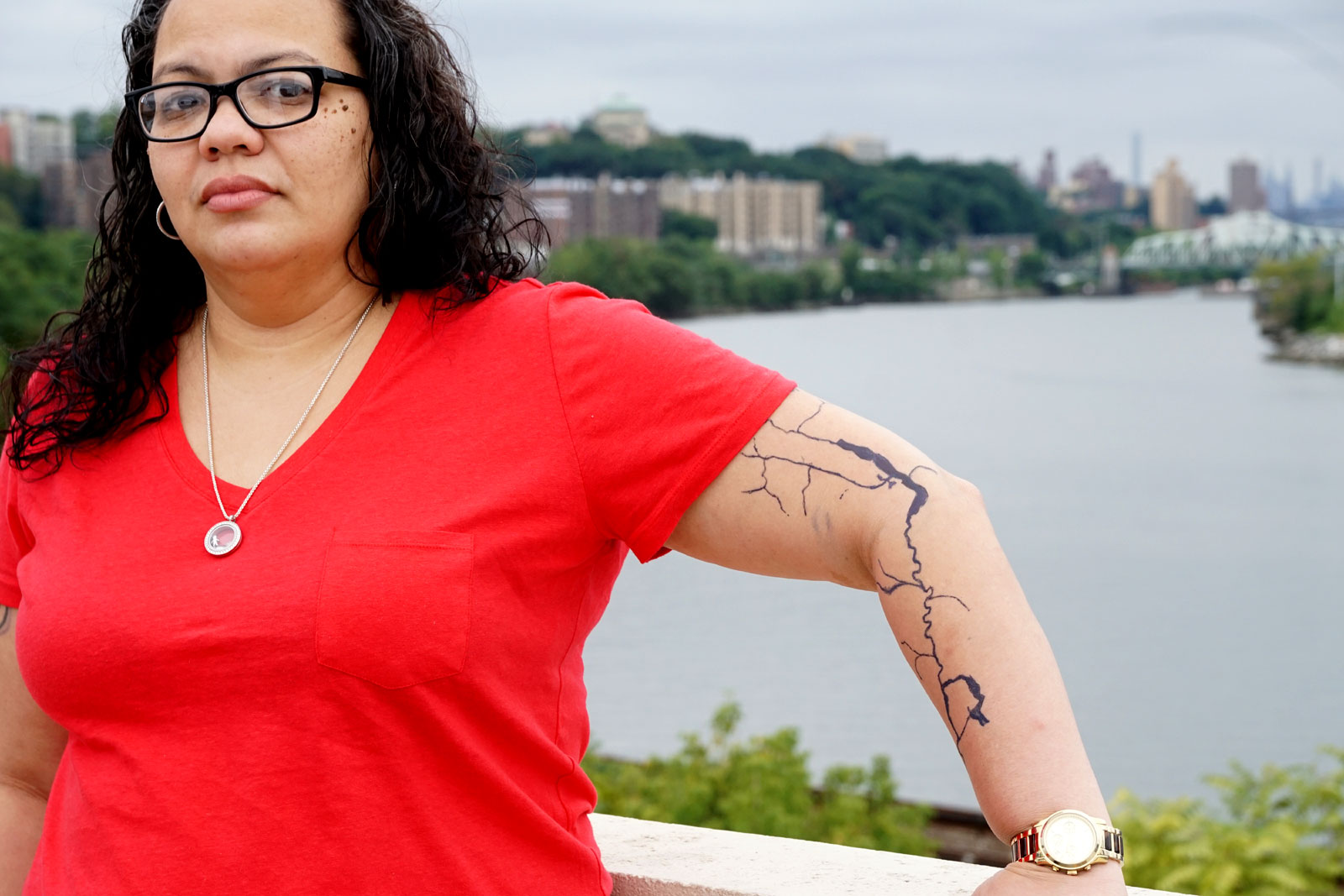Q&A with Bob Braine: Monuments to Extinct Topography
Bob Braine discusses the inspiration behind his practice, and about how Estuary Tattoos fits in with his overall trajectory as an artist.
What would you say is your primary interest as an artist?
I am interested in the intersection between the built world and the former world, specifically the disconnection between what was and what is in people’s perceptions of the natural (or former) world throughout western capitalistic culture, history and resource usage.
What early influences nudged you in this direction, and how have they helped direct your practice?
I have always drawn as long back as I can remember. The gateway stimulus for my drawing was animals. My father, a copy editor of science textbooks and Time Life, always brought books home. The World We Live In (AKA “the big red book”) was our family bible; within it there were paintings by Rudolf Zallinger, the artist who did the murals of the age of dinosaurs at the Yale Peabody museum. [I was also inspired by] very early camping experiences, enhanced by my mother, who would make shadow boxes of all the things I collected from the forest and the seashore.
My early experiences at the margins of the built world-as a six year old fishing in the storm drain at the bottom of my street in Levittown to explorations of those interstitial spaces along Long Island’s Robert Moses parkways, with their canalized drainage ditches (I called them streams), have smoothly transitioned to a practice that is wide-ranging in regards to materials and execution.
What direction do you see your work going?
I will continue in the direction of my inquiry- making monuments to extinct topography, various interventions to the common perceptions of our built world.
What has inspired Estuary Tattoos as a project specifically?
My inspiration for this Estuary Tattoos stemmed from a desire to connect the human body with a graphic representation of the altered topography [of this area of the Bronx]. Connecting the corporal to the outer world using the medium and idea of tattoos, a practice of corporal marking that is practically as old as our species, is a way to bring consciousness and pride in the legacy of the territory where we live.
What do you see as the biggest challenge facing the planet?
The misuse of planetary resources. I was just out on the Atlantic ocean yesterday fishing with a middle school friend in the areas we have been fishing together for the past 42 years and am keenly reminded of the changes that have occurred in fish populations.
How do you see the arts and sciences working together to make sustainable changes for our planet?
Artists are not beholden to the scientific method and are therefore in a position to look at issues with a wider scope. This additional perspective can be brought to bear on various issues of sustainability in need of solutions. I am reminded of science fiction predicting many of the things that we take for granted, such as the star trek communicators [smartphones] we use every day. Imagination can light the way and help to illustrate what may be possible. Art thinks outside the idea of practicality to the best utopian conditions moving into the future. Though art has been culturally excised in the popular imagination from science, in fact each does not exist without the other – they are inseparable tools.
What is your view of the role of the artist in public life?
As a seer
Are you an optimist or pessimist about the future? What is one thing you think cities can do now to prevent ecological disasters from happening?
I don’t think that all life will be extinguished on the planet due to the agency of humans, so in this respect I am an optimist. [However], I work in the ditches with many who are truly delusional and, as long as tribalism is an element in human interactions, I hold little hope for the future of the planet as we have known it to be. I think that if cities- and here lies my optimism- can work to become whole sustainable systems: green roofs, some degree of food production, energy sustainability, population concentration so as to facilitate sustainable land use in the countryside, etc., they can become engines of change that can be emulated beyond their borders.
If you could get three people together in a room to transform this issue, who would they be and why would you choose them?
I would choose an enlightened global capitalist-say Bill Gates, a journalist say Thomas Friedman and a scientist, say Neil deGrasse Tyson to come up with a logical functional solution-they should be president of this country.
Tell us about a way your research has changed you.
My research is constant and informs in a feedback loop all I do. Slowly over the years I feel as though I have gained a certain perspective built by a wide diversity of activities and inquiry that puts me in a position to effectively communicate these ideas to others. If anything I do sheds light on various dysfunctional conditions and changes people’s perceptions of those situations, I will feel as though I have been successful in my endeavors.
Bob Braine has traveled extensively in Central and South America, Europe and the US generating photographs, drawings and site-specific interventions based on the fractured utopia of compromised ecosystems. Braine has exhibited in the US at venues such as the Queens Museum of Art (Crossing the Line) and PS1 (Greater NY). In Europe he has worked extensively with the Gallery for Landscape Art in Hamburg, Germany. His exhibitions in Europe include Hamburger Kunsthalle (Fieldwork), Kunstverien in Hamburg (Mapping a City), Al Almere, The Netherlands (From Reality to Fantasy), Kunsthalle Wien, Karlsplatz, Vienna (Get Together, Art as Teamwork), and Villa Medici, Rome (La Memoire-99).
Estuary Tattoos toured the Bronx in September and October. City as Living Laboratory is currently working on organizing an exhibition of the work that resulted. Stay tuned for more details.



